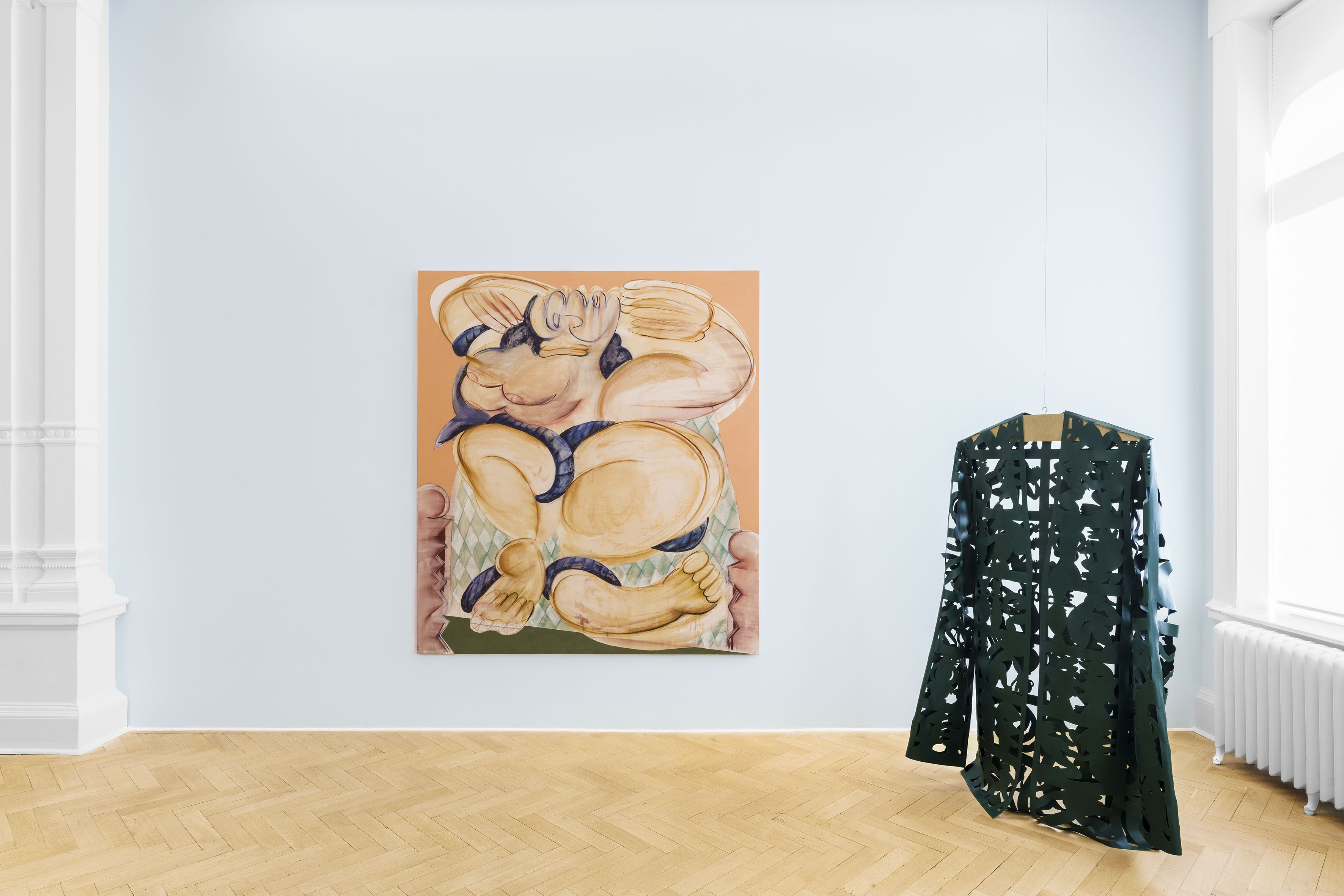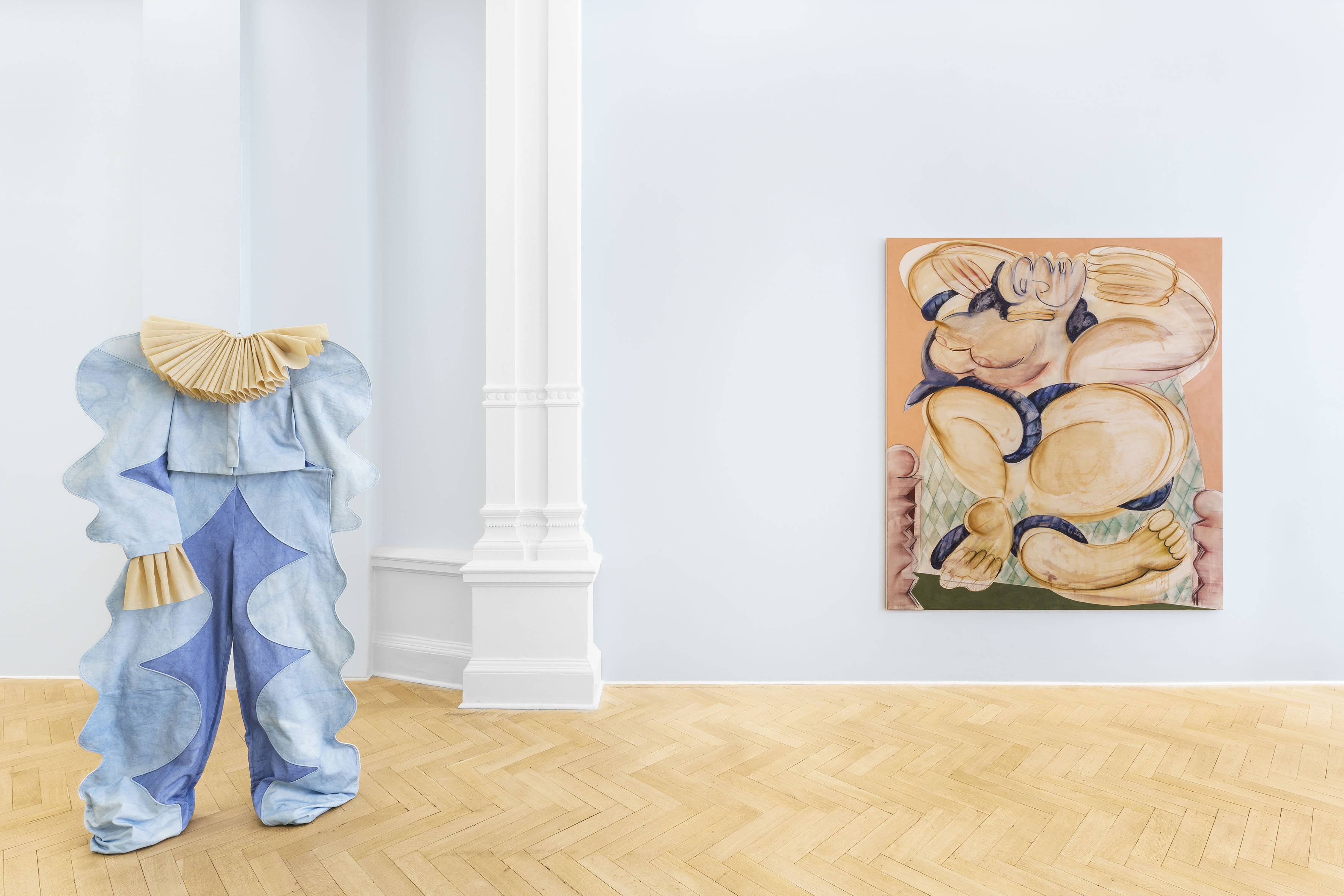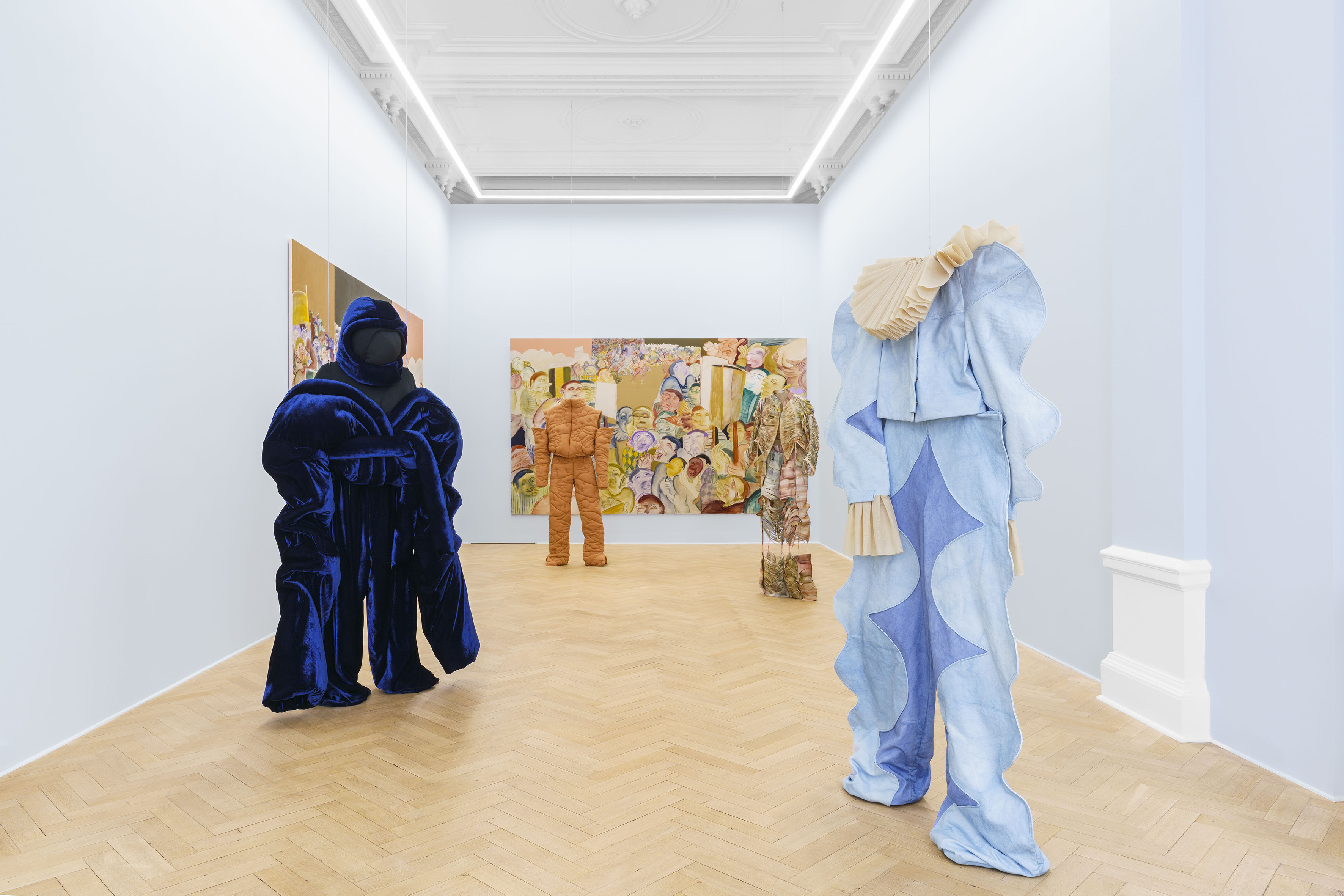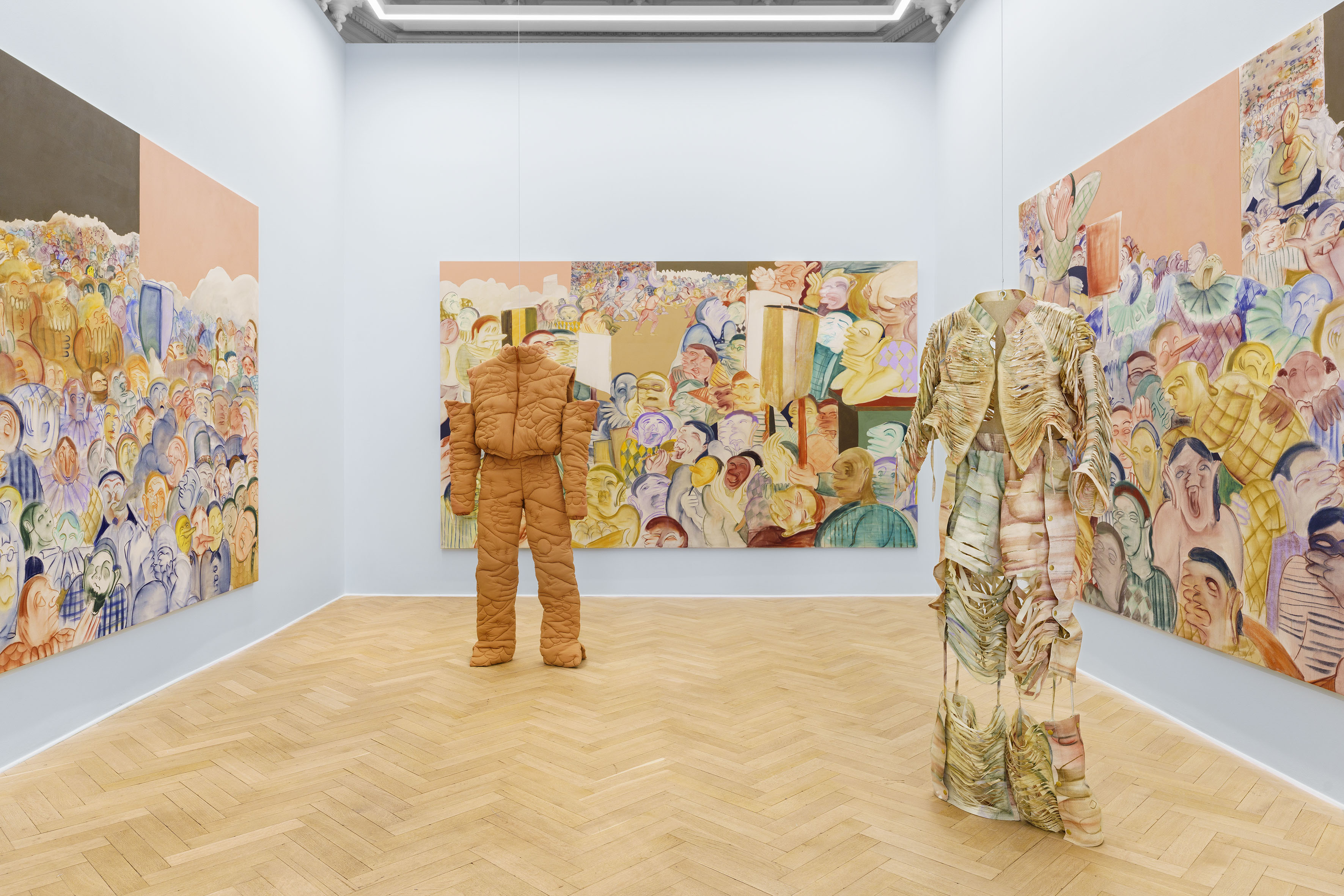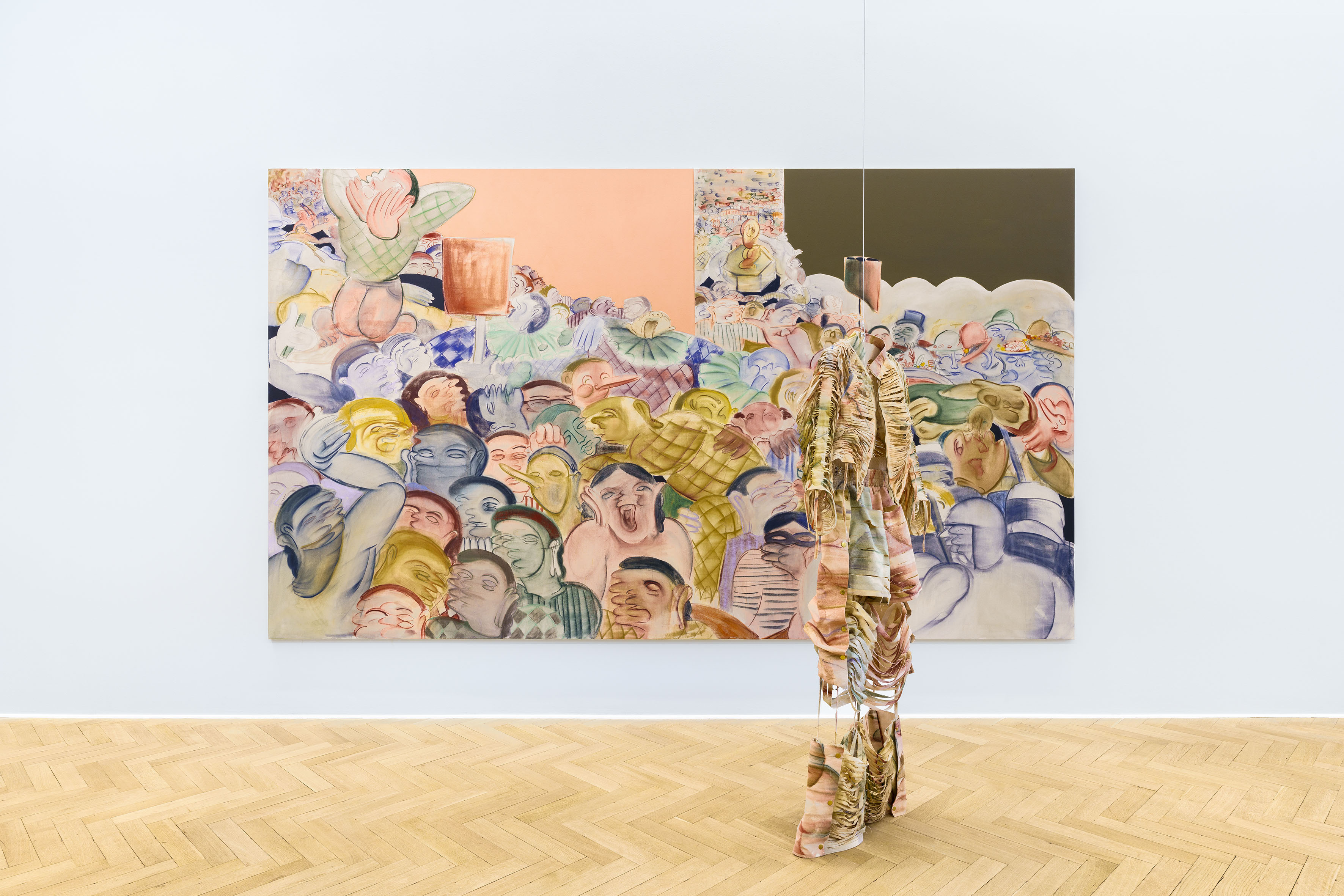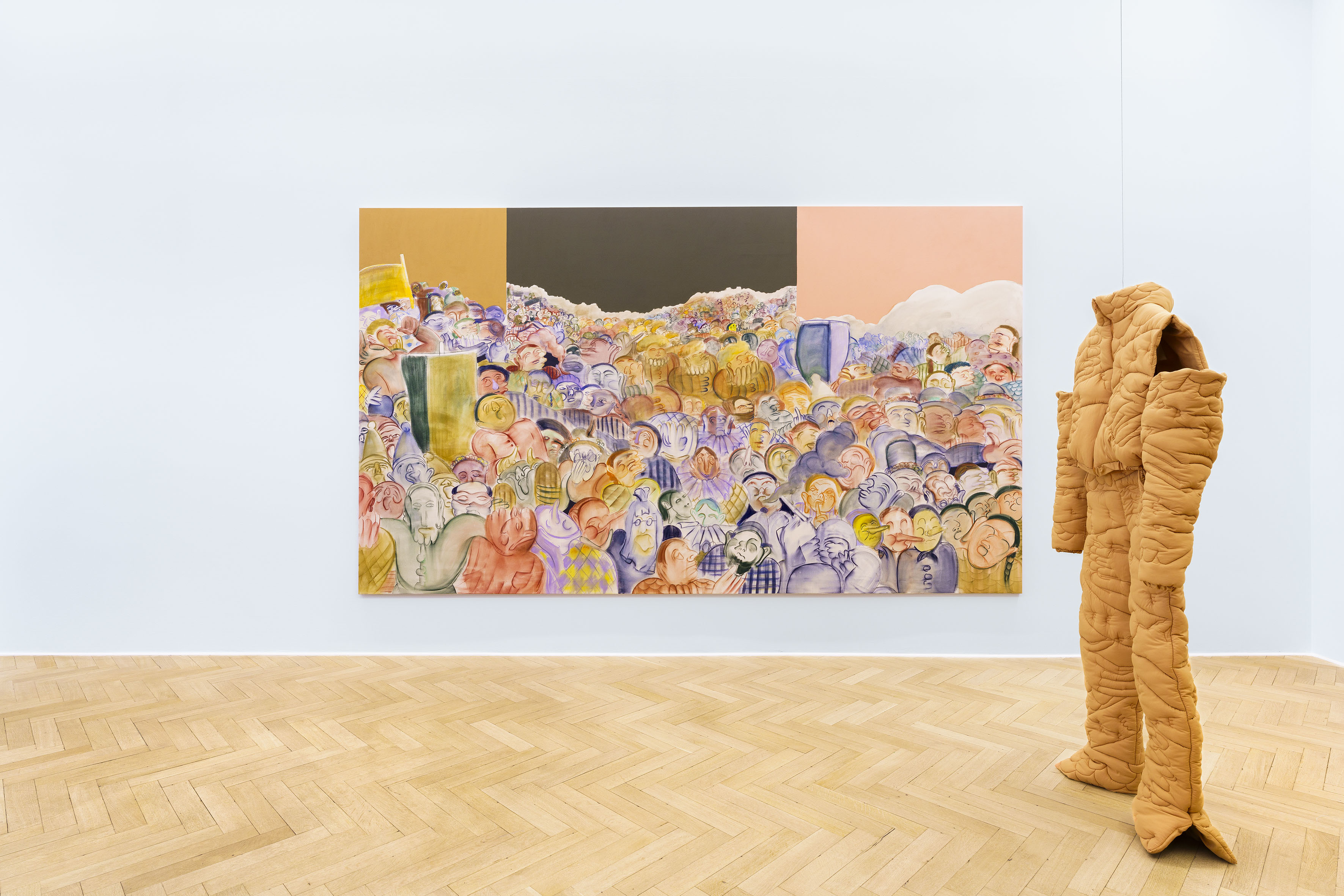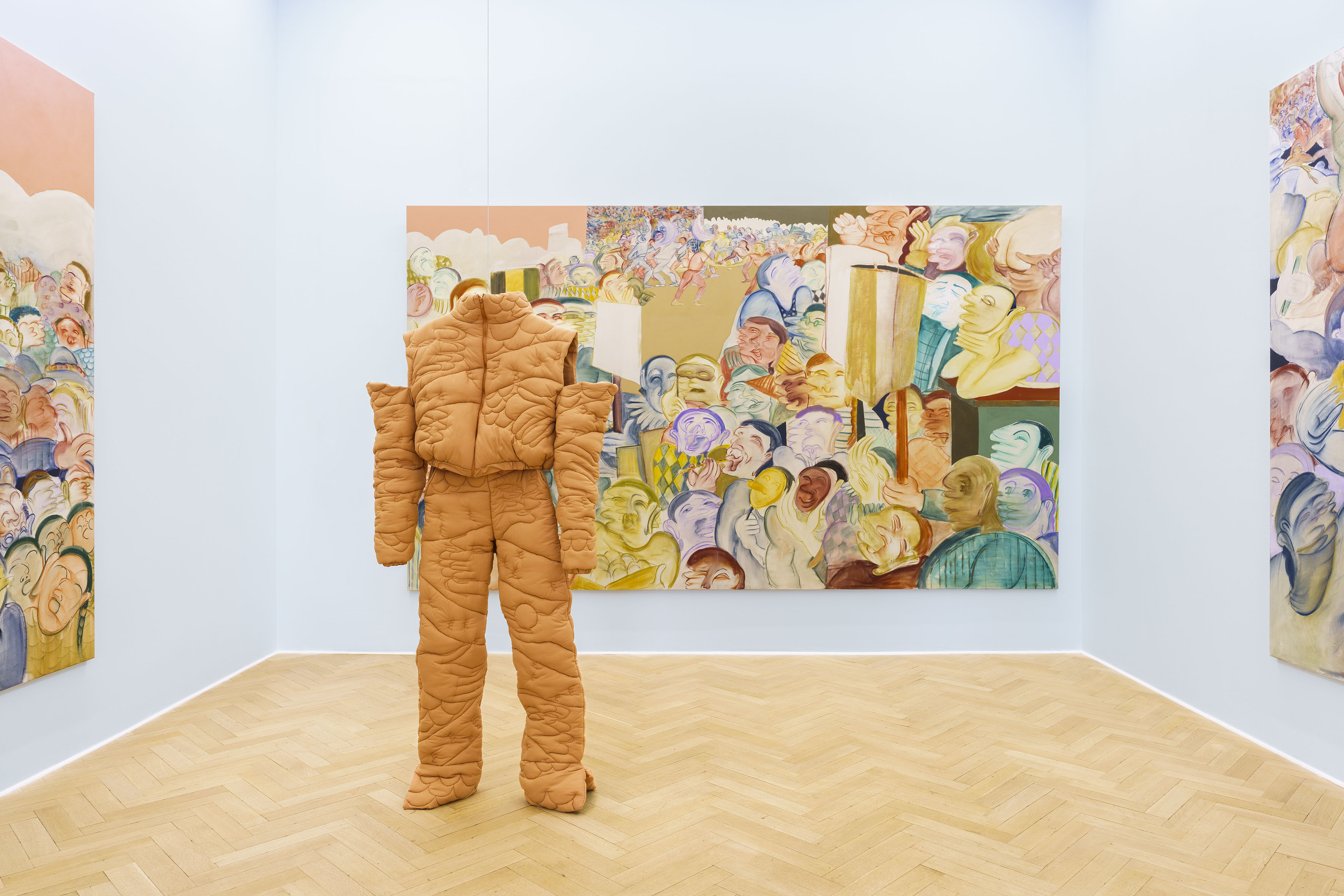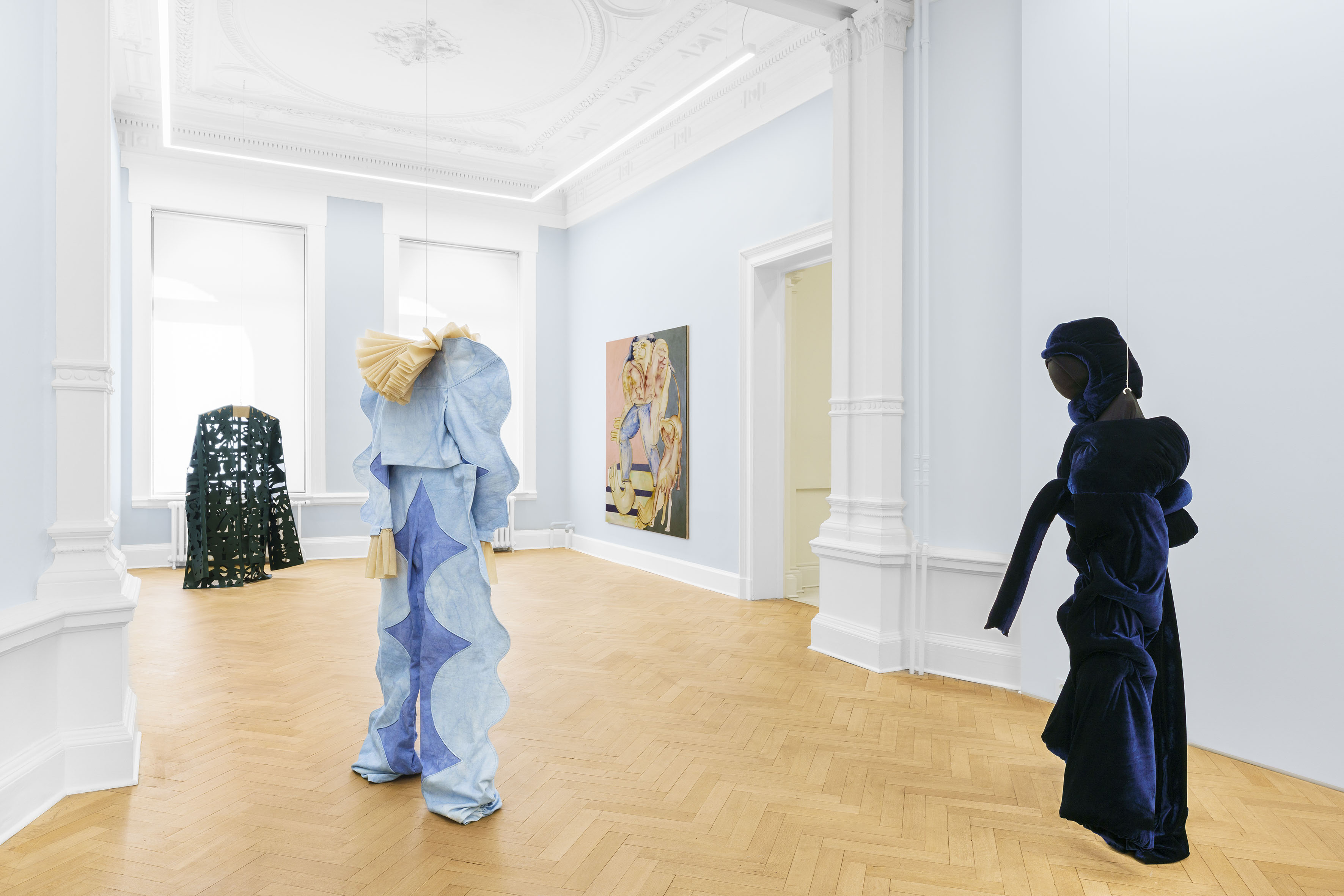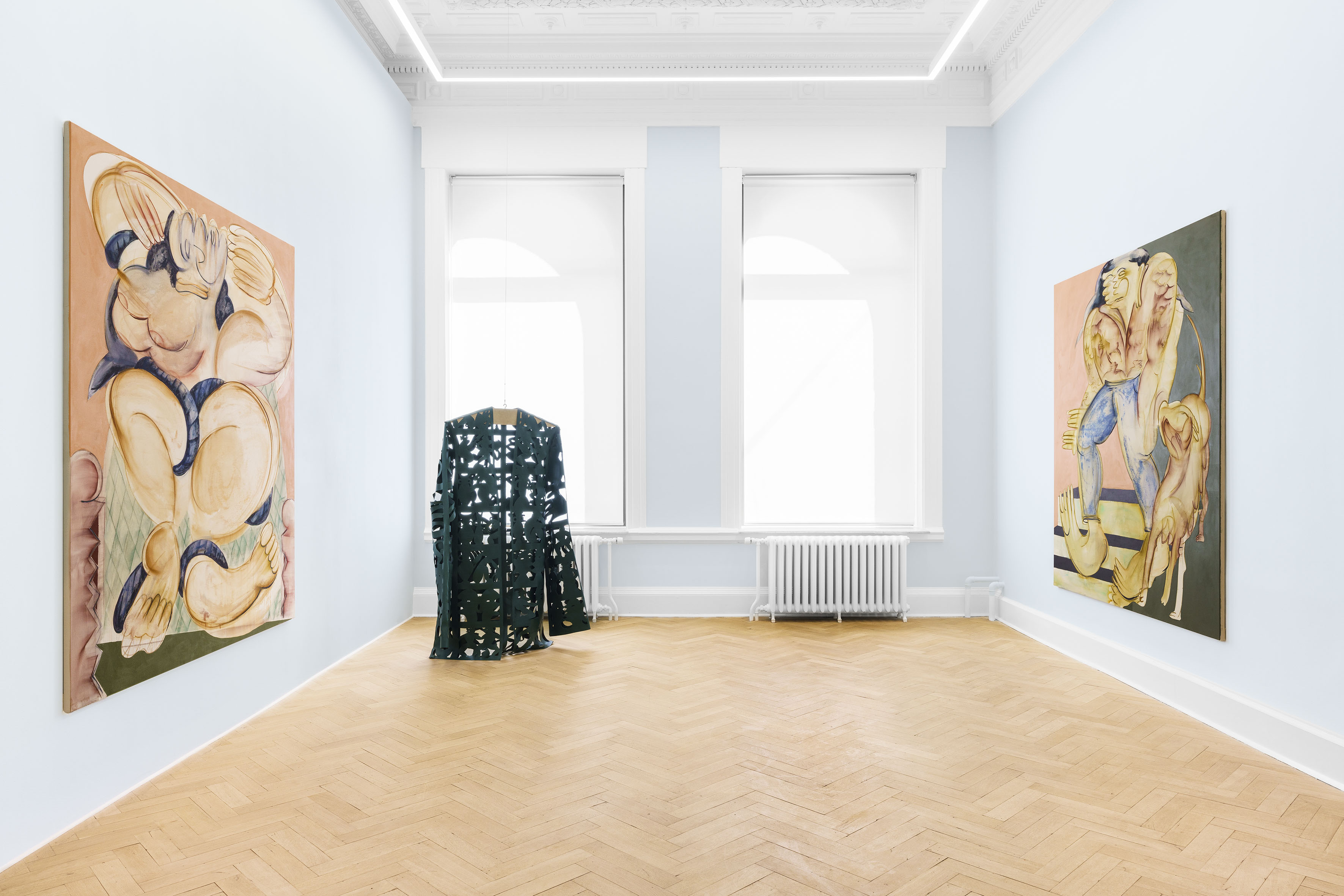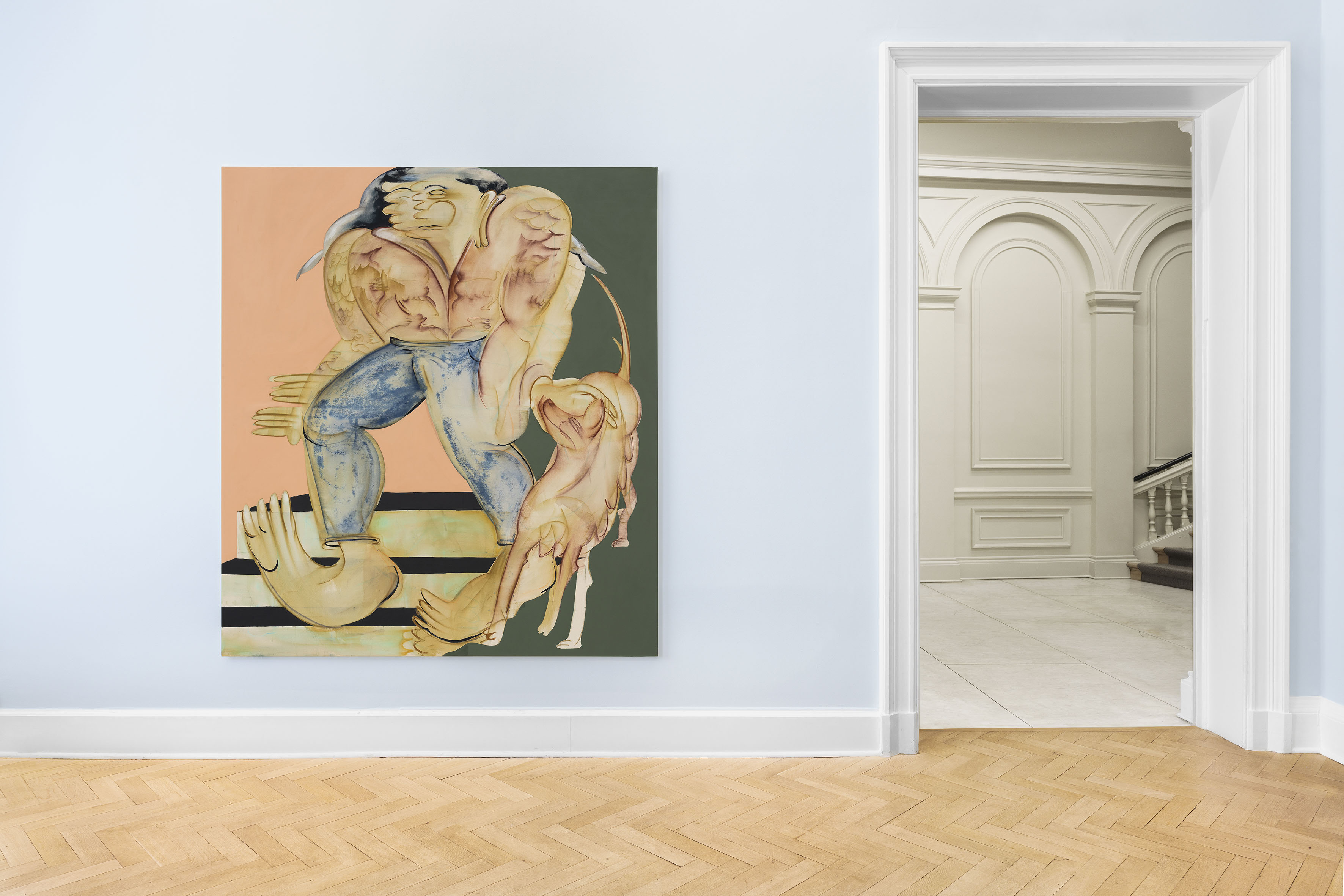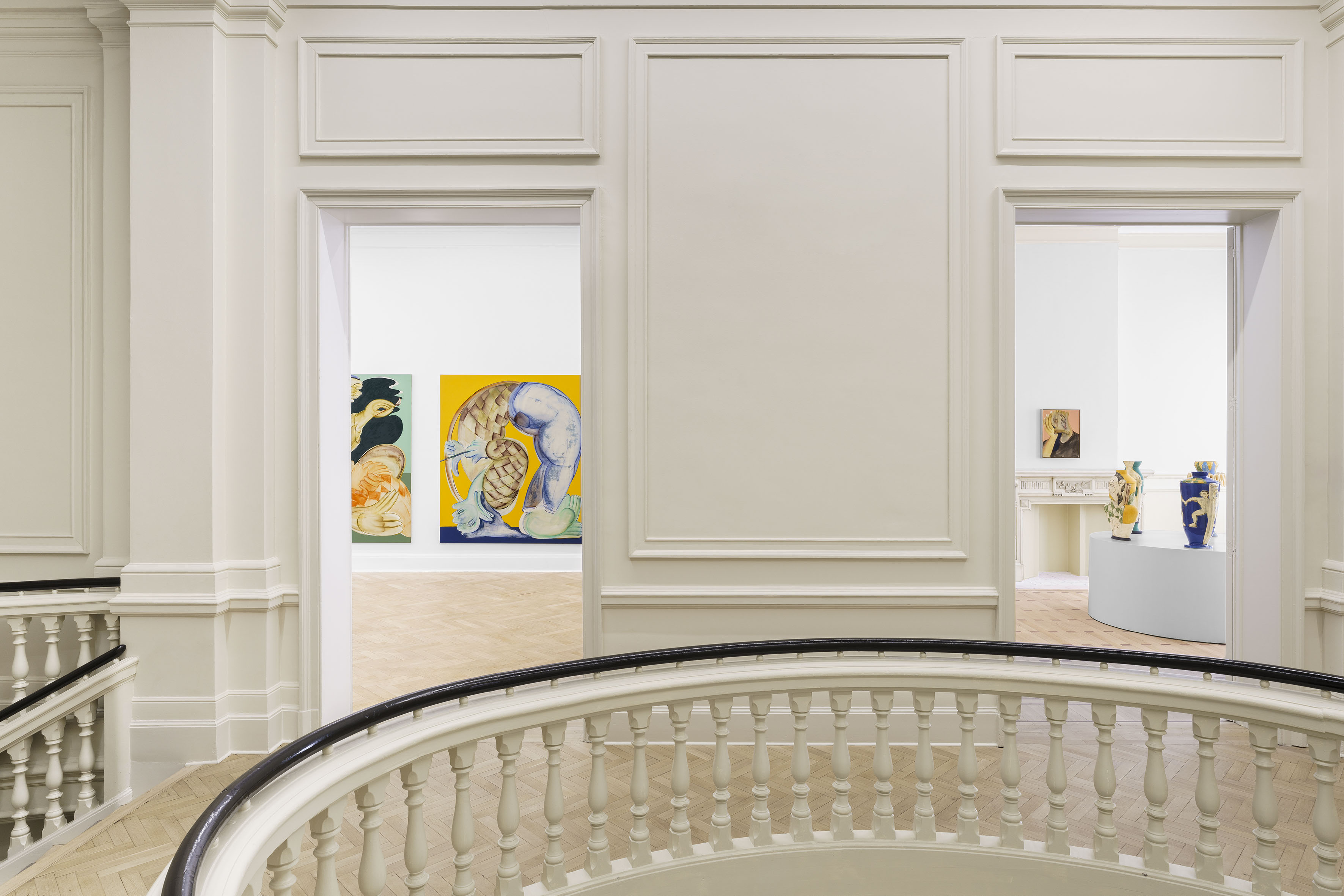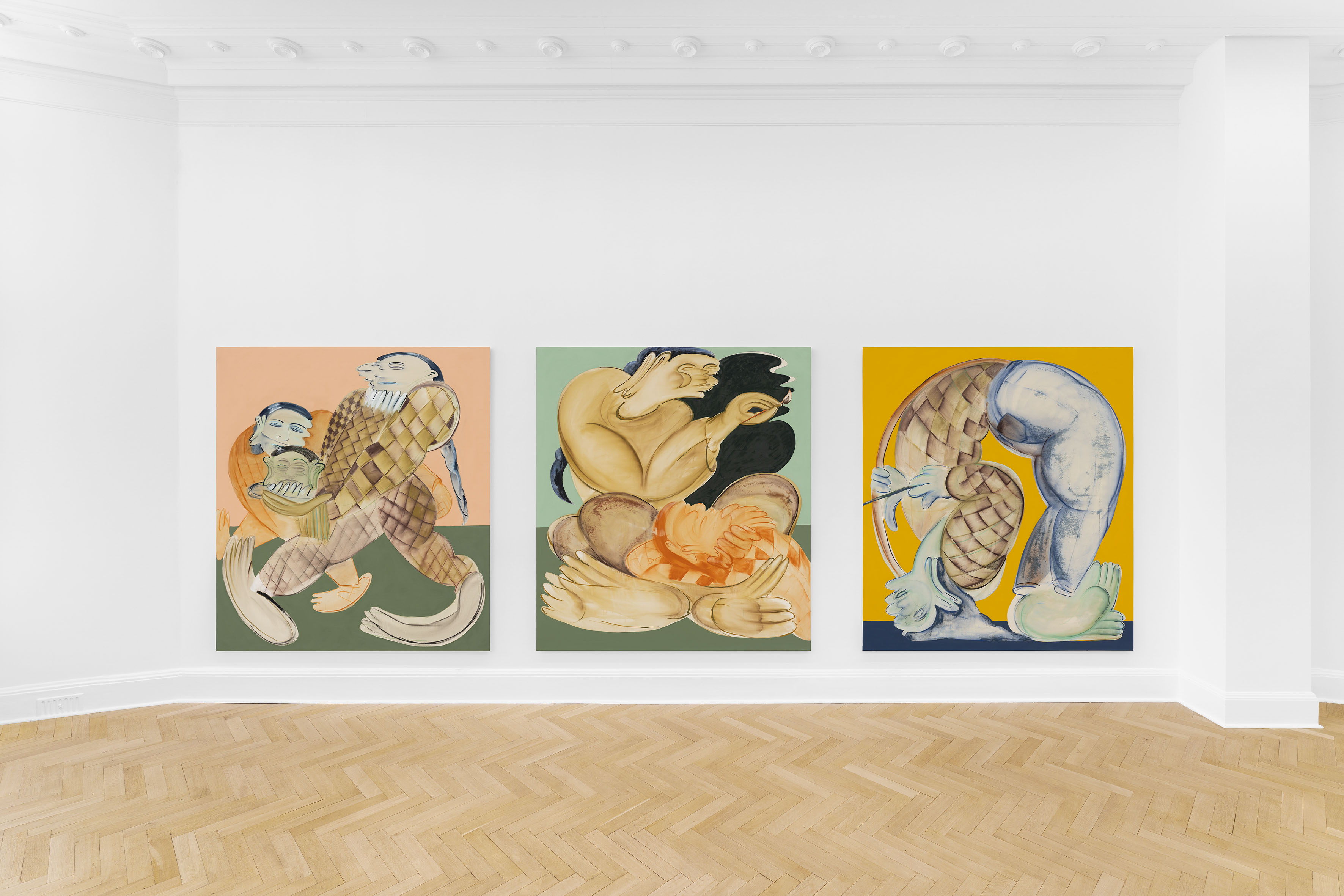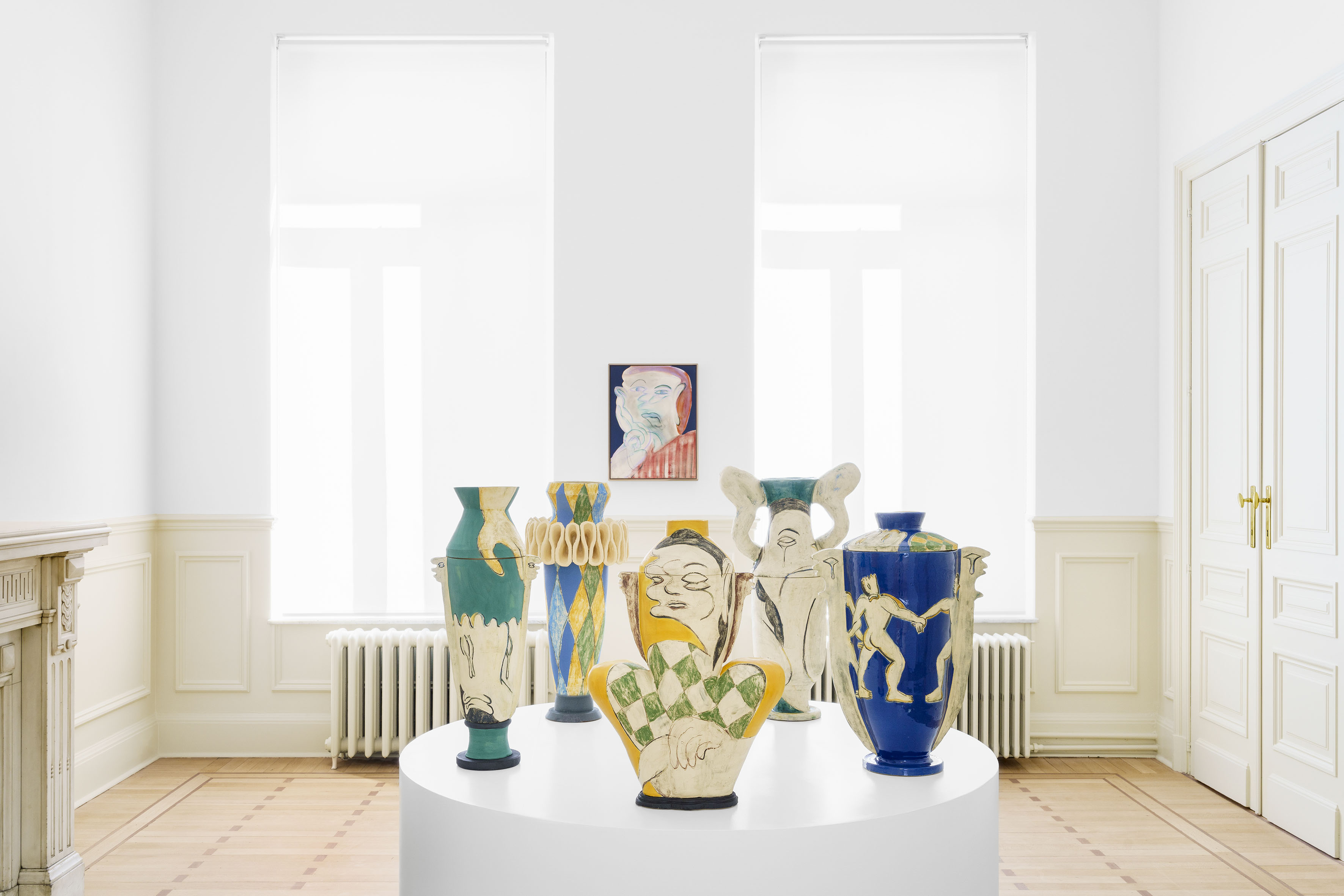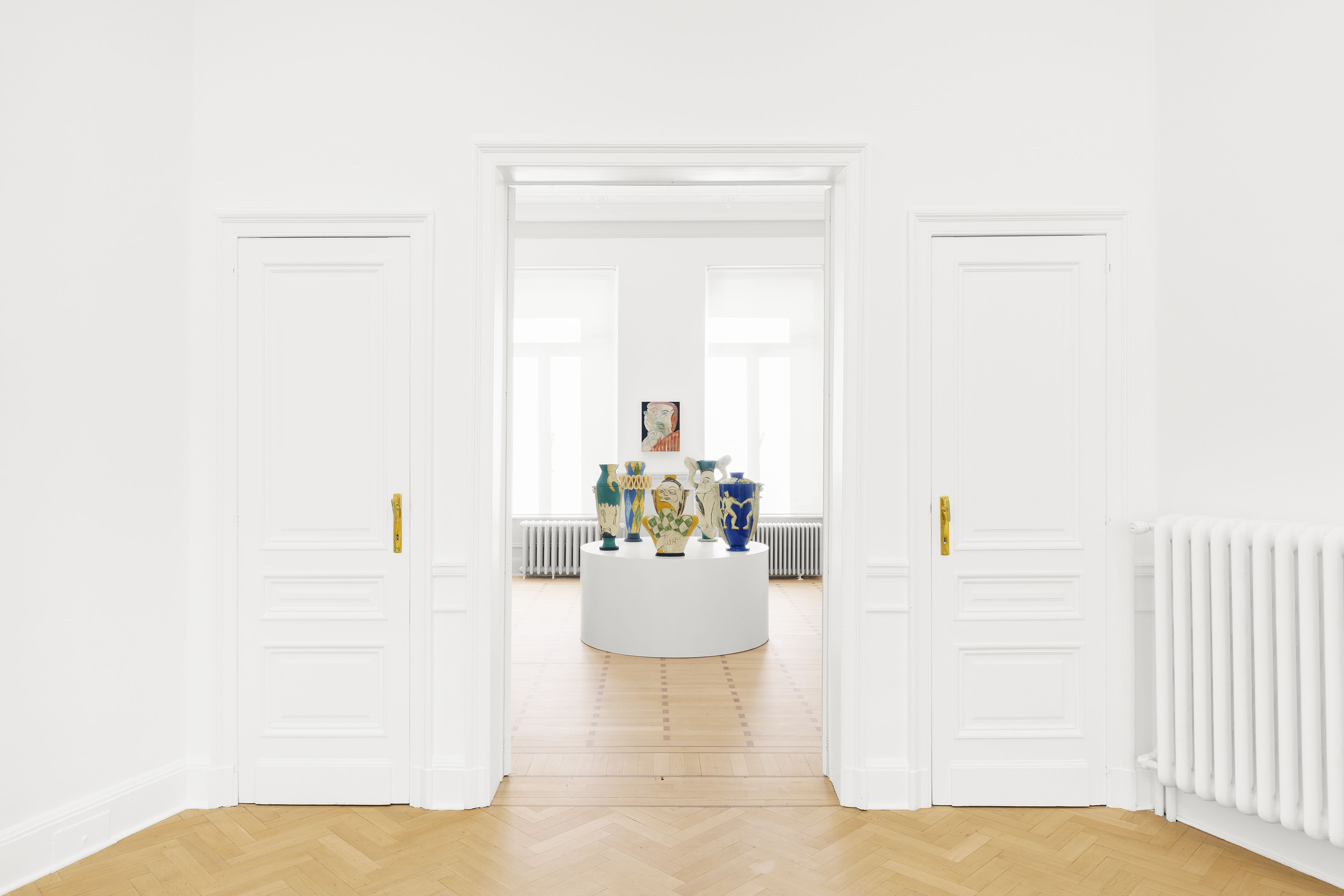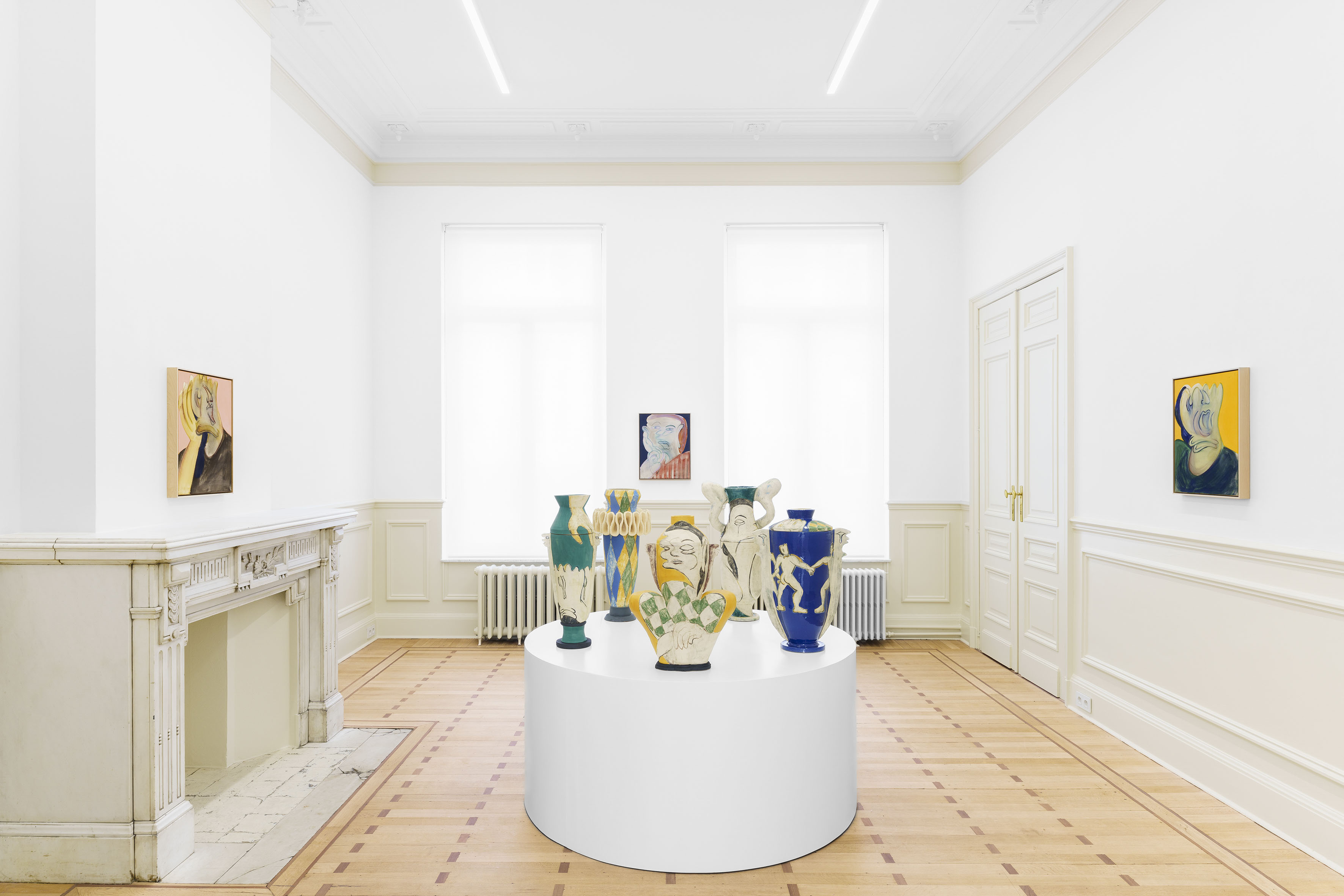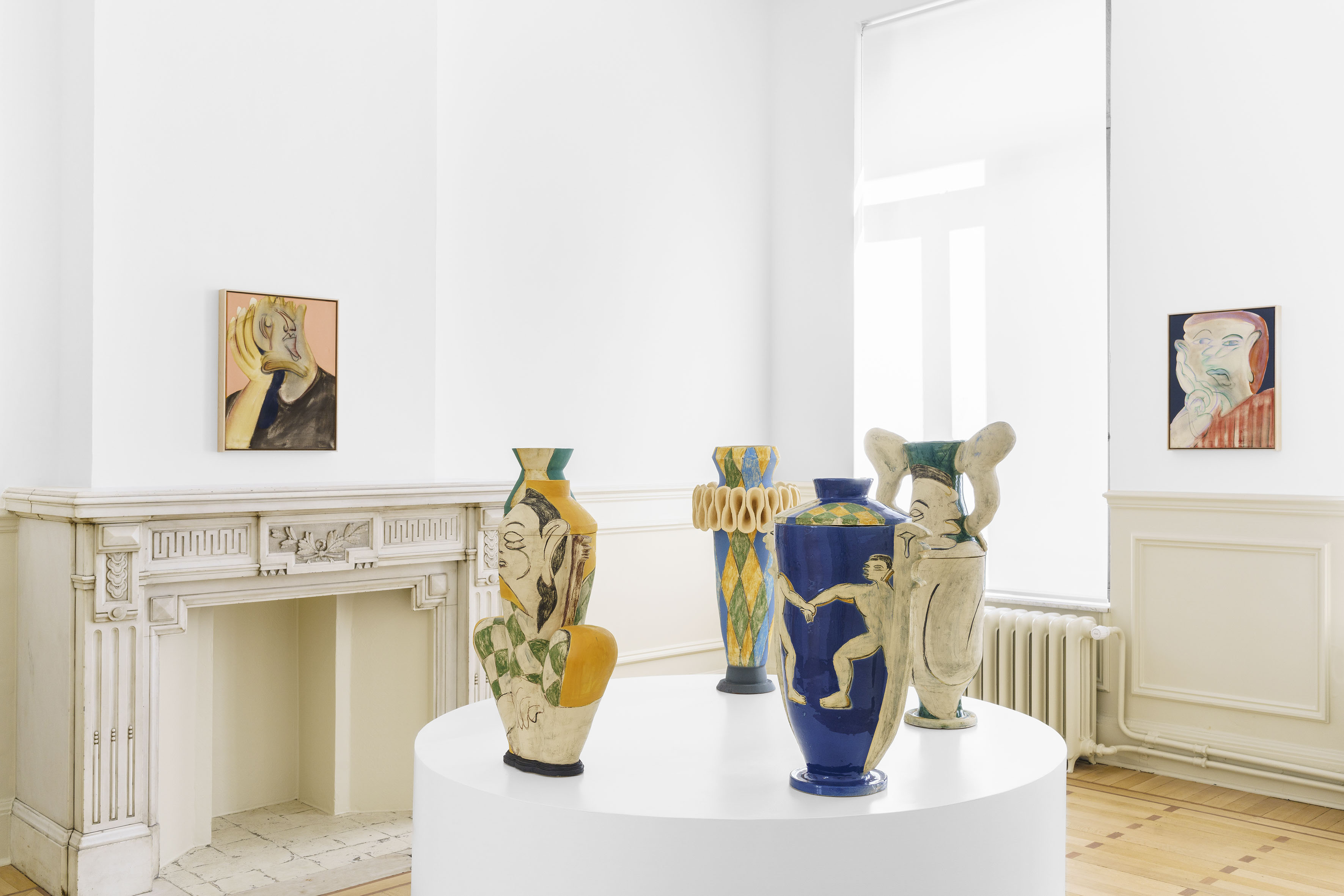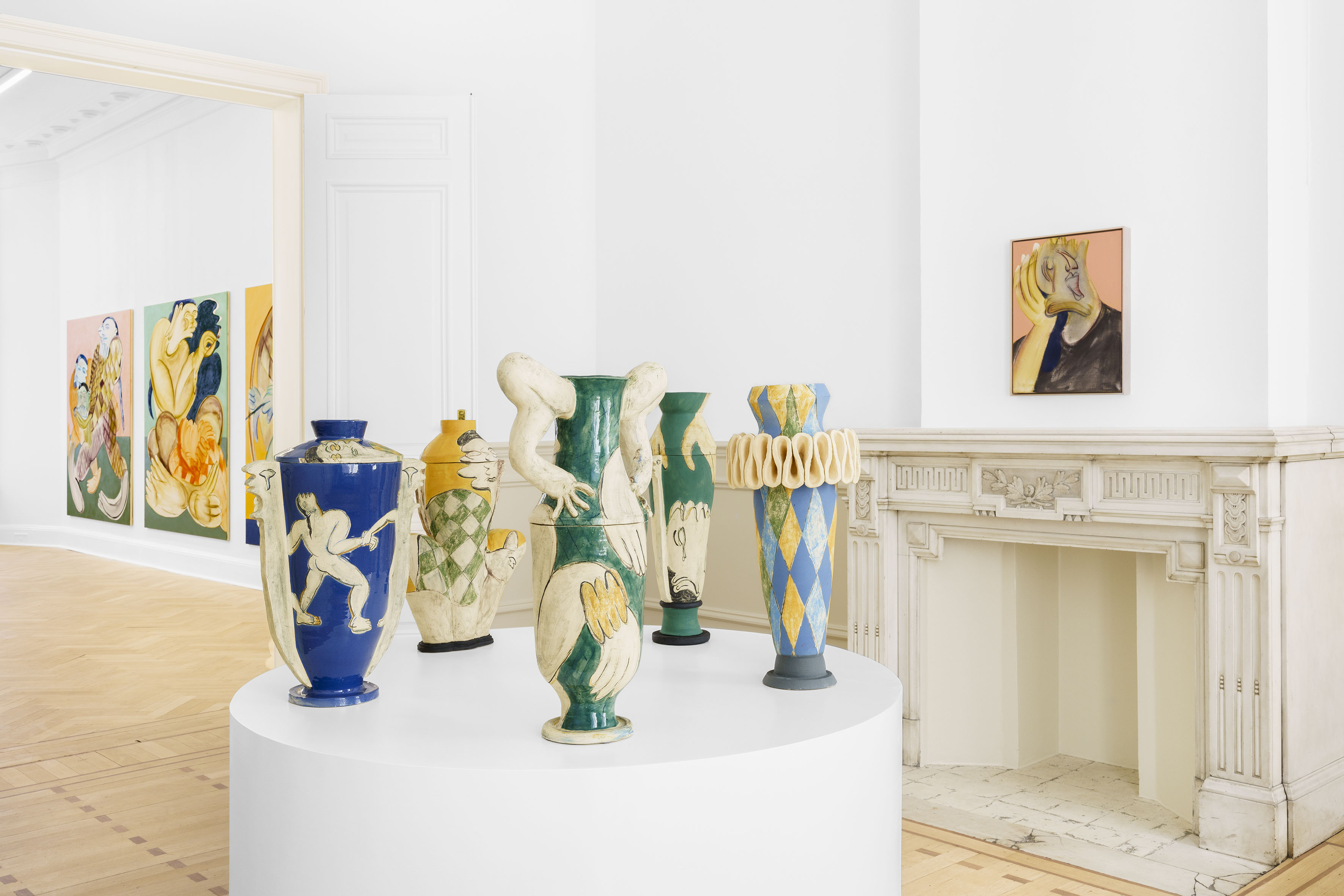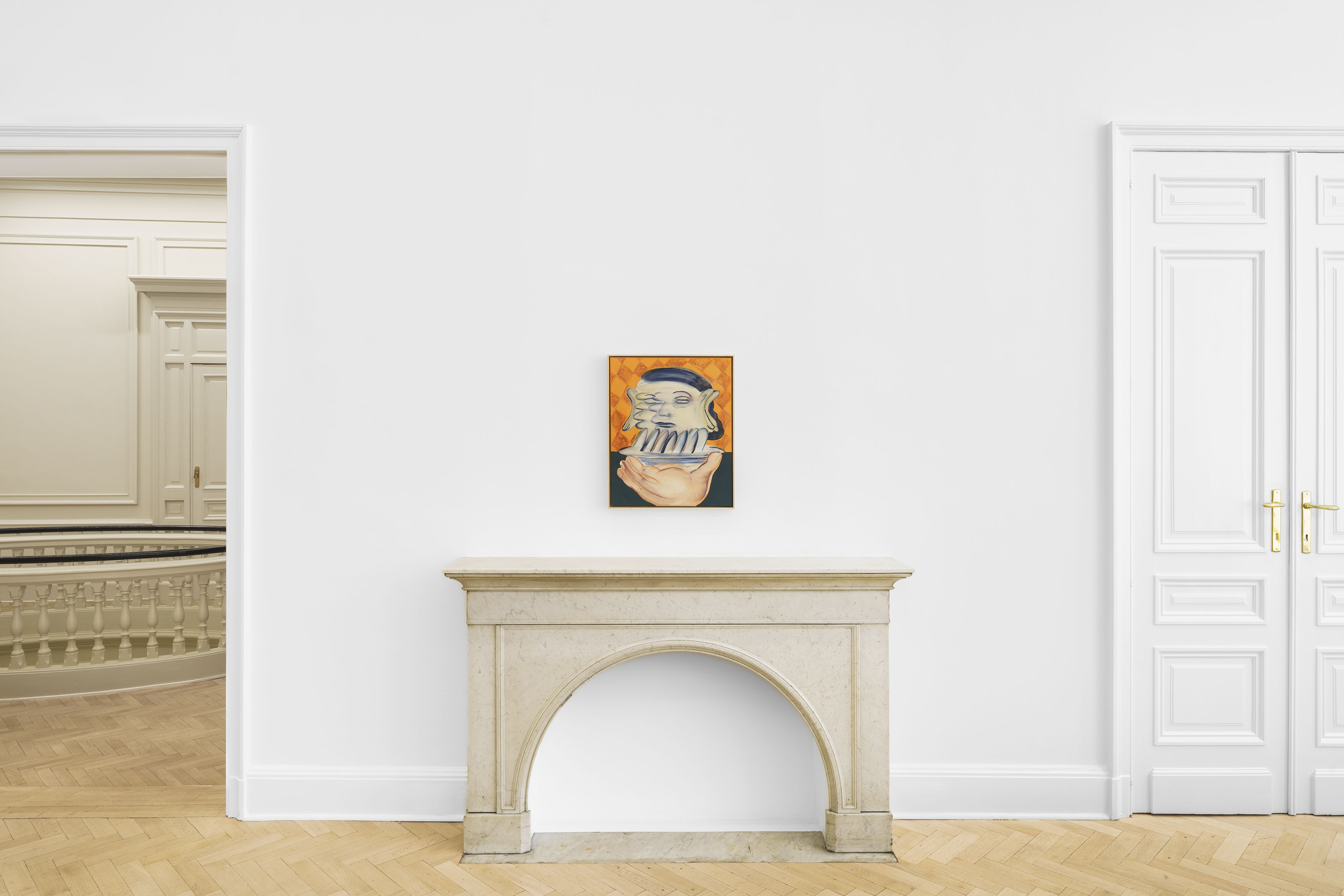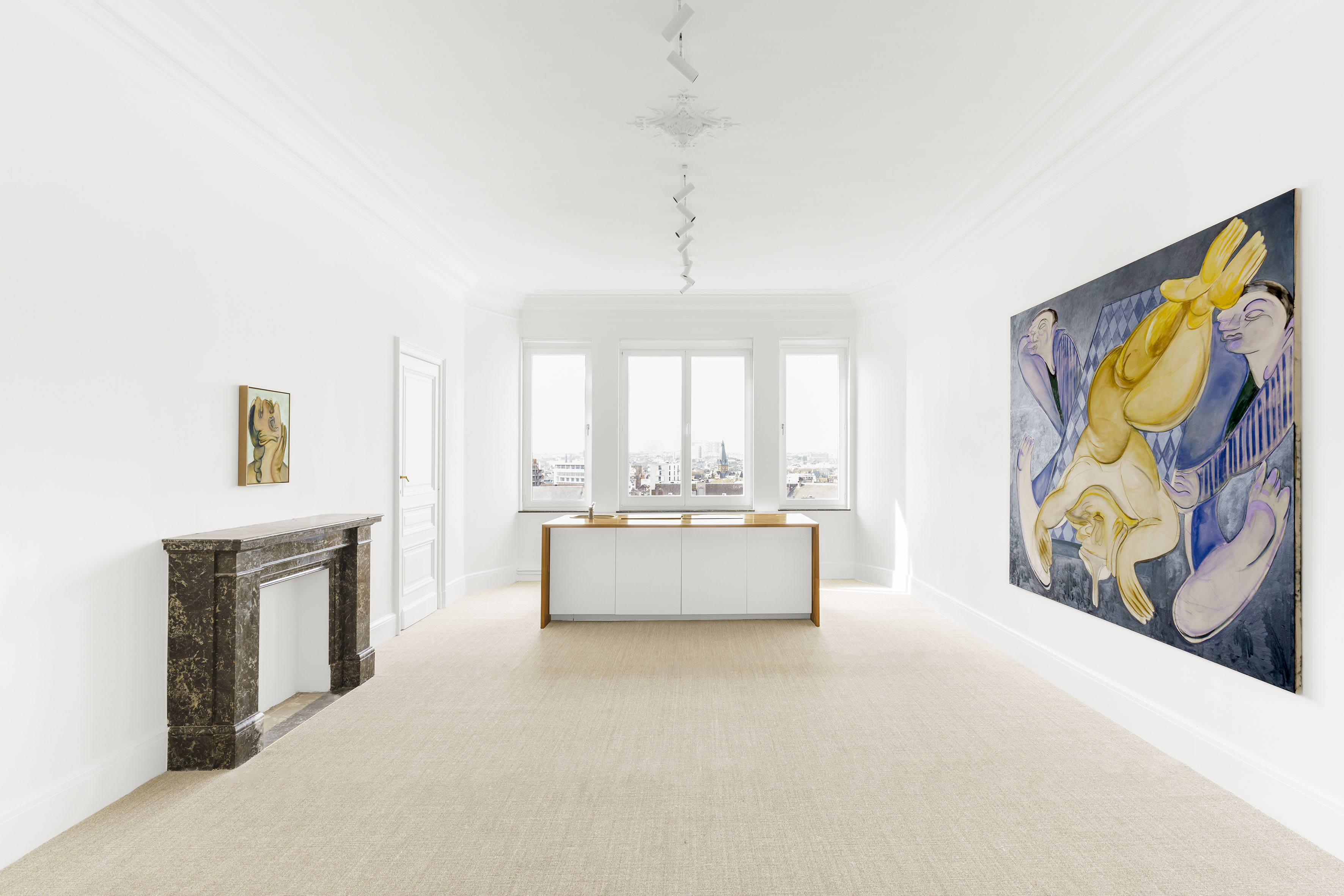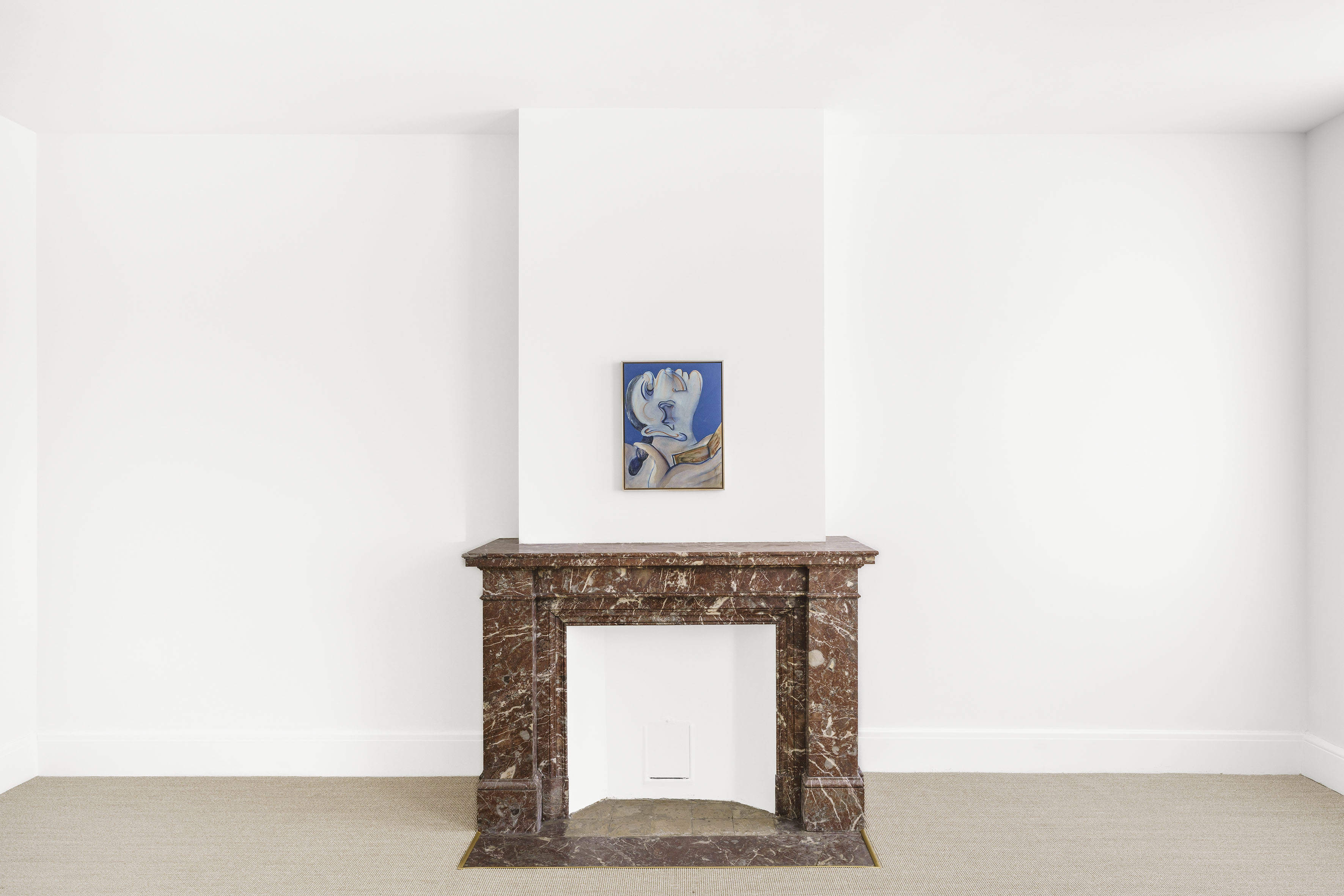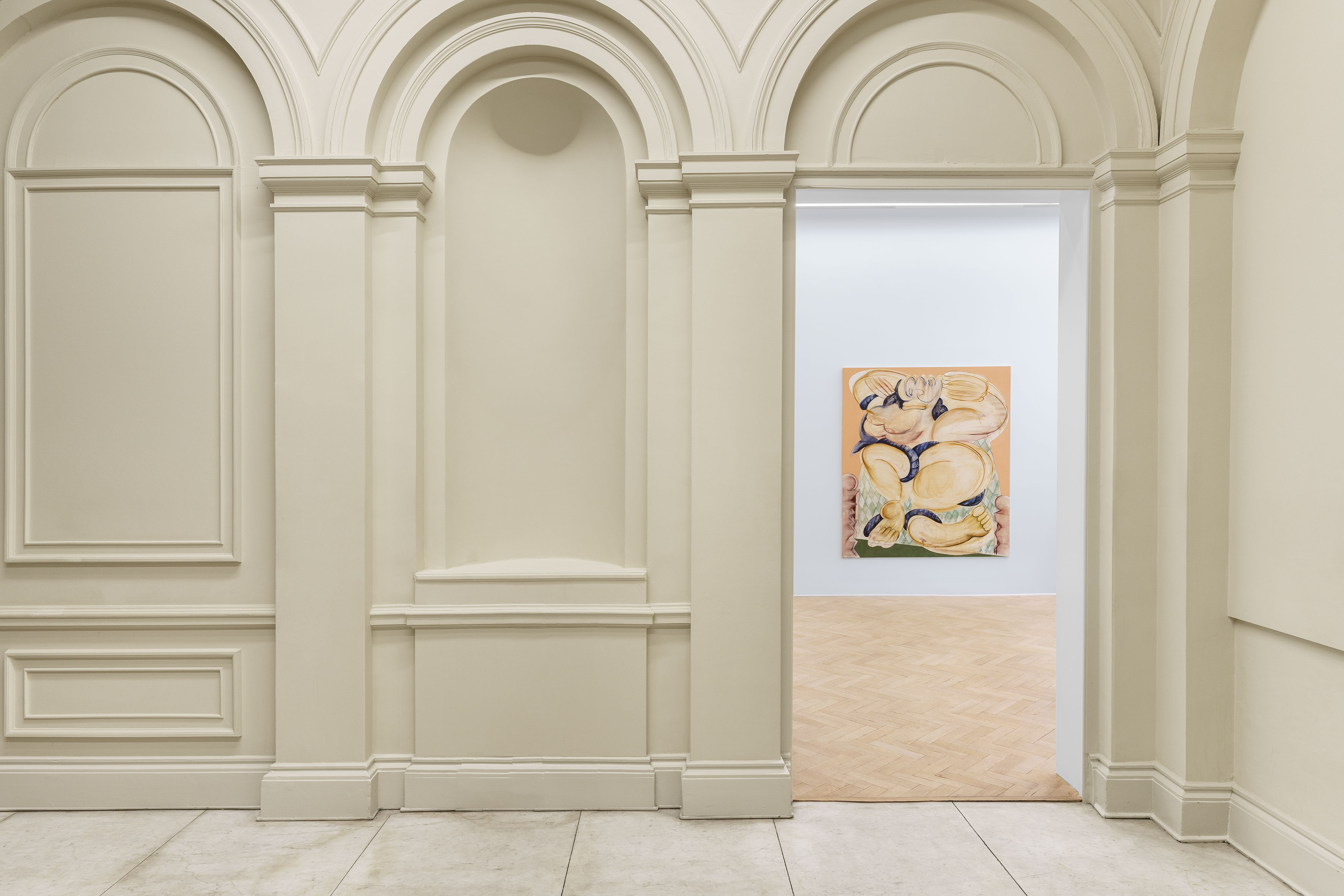
About
Maestra Lacrymae
An opera by Anastasia Bay
Music
Interpreted, written, and composed by
Joseph Schiano di Lombo
For her second solo show at the gallery, Anastasia Bay has created an opus in the form of an exhibition opera: Maestra Lacrymae. It's a world in which characters and citation-paintings are hijacked from their eras and reappear, summoned into the present.
The opera and its mediaeval ancestor, the masquerade, indicate that we are dealing with questions of representation. Whether scenic or pictorial, the convening of characters, costumes, and painted, spoken, sung or performed scenes, inherently references narrative and dramaturgical forms.
A triptych revisited three times invites us into the first citation-painting, that of James Ensor's "Christ's Entry into Brussels". A crowd of heroic anti-heroes, popular figures, dissidents, rebels, in camouflage, feigning other identities, playing other roles, other assignments.
They look at us, encircling us in the exhibition space. The three panoramic paintings bring together the corpus of characters activated by Anastasia Bay in her work since the beginning: popular figures, singers, acrobats, archers, troublemakers, all wander through the public space of the street, squares, and other murkier places. They show us their asses, scream, and make faces. The noria they form foments in revolt and insurrection, some get arrested and roughed up by law enforcement , some are armed with flags, banners, bows and arrows, and we don't know how dangerous they are.
A coded game to magnify ancestral cults and rituals.
This sensitive, evocative tension, shifting from people’s carnival to myth and reinvention, connects us to a pre-existing imaginary, echoing a certain reality in the contemporary landscape.
The musical narrative is based on the creation of songs sung by an ensemble of female characters, whose origins lie in the history of classical art: Artemis of Ephesus, Dibutades, the Golem, Gilles of the Carnival, and Penelope. All music and lyrics in the opera were written and composed by musician Joseph Schiano di Lombo, bringing each character to life, making them singular, embodying them in the present. The play consists of five acts and a series of scenes.
Five respective characters and paintings are drawn from these crowded scenes. They operate as individualised extractions from the group known as "The Others". Demiurgic feminine figures who become aware of their existence and, through thought and action, create new identities for themselves. Always fluctuating, moving, and evolving.
In this continuum, Anastasia Bay's figures hold their heads at arm's length.
This is one of the characteristics of Maestra Lacrymae.
The history of classical Western painting melts into an abyss of violence and cruelty so luminous that it’s like an enchantment. One register in particular is particularly vulgar. Think of the beheading scenes. One painting depicts a proud, smiling woman holding a man's head on a platter, titled "Salomè con la testa del Battista". You can feel the man whose head was just cut off’s fear–visible, palpable, trembling, white as death. Caravaggio again, in Judith beheading Holofernes, a scandalous and daring painting at the time, with its beautiful spurt of blood. This topos of images exerts a strange fascination, repeating the ritual of dread and delight in the horror of these scenes. Until the disgust wins out.
Coming back to that. Our attraction to violence, disgust and the fluids that flow from it act as a powerful form of sorcery. The painter sublimates the disgusting peat intonaco (before it's dry). He speaks of mou "fresca" (wet), tempéra (fat), he says "distemper", "emulsion", or "fat on lean", he glues on the skin (rabbit or fish skin glue). In fresco, when the pigment covers the layer of mortar previously spread, the mortar is said to be "in love".
Anastasia Bay is herself the demiurge painter of her figures.
An emblematic figure in the artist's work, the Harlequin returns in a different guise.
Their patched lozenges, forming an emblematic rhombic costume, reveal multiple facets of this complex character. An evil, rebellious and boisterous genius, they are the "Buffoon", the one who puffs out their cheeks; they are the Fool or the Crazy one. It is a character whose essence is profoundly non-binary, neither one nor the other, but the one and the other intertwined. The figure of unbridled parties of misfits and rejects. A parody of worlds, played out by the clergy in the Middle Ages, or later in the courts of Europe's kingdoms in the form of charivari or Saturnalia, and later still, in the form of rave parties.
They are the satellite to reality, orbiting around our seriousness.
Fluids trickle down the pastel-water-soaked canvas under the gaze of weeping cantatrices. On the surface of the paintings, the colours of a world in the making are paraded, absorbing into its material images bursting with the muted violence of the world, from which emerge the features and lines of the one to come.
Emilie Pischedda translated by Dana Kuehr/ Blurbs
